The following pictures show oak processionary moths, caterpillars and nests in a variety of situations.
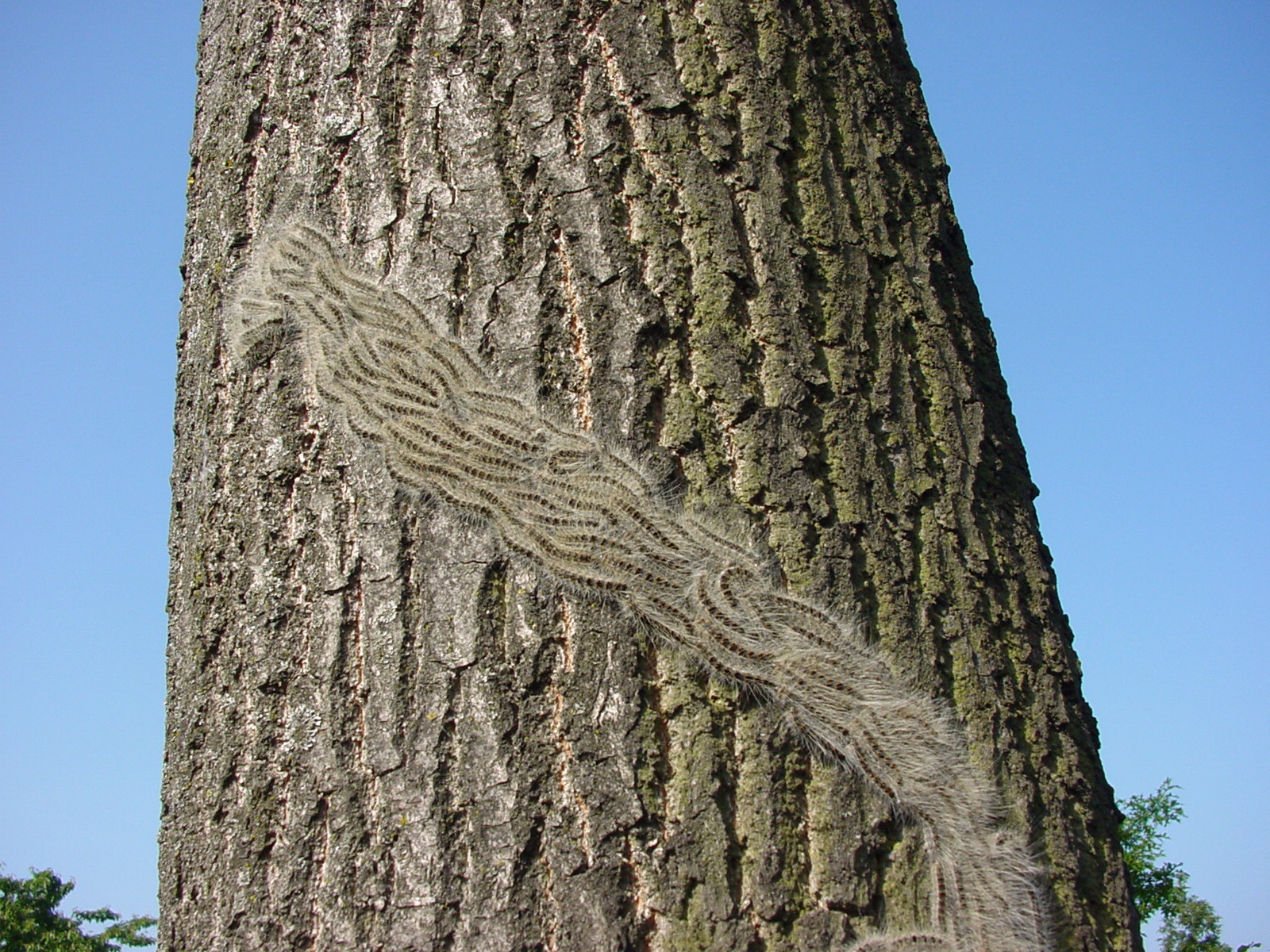
A procession of OPM caterpillars on the trunk of an oak tree. (Picture: Henry Kuppen)
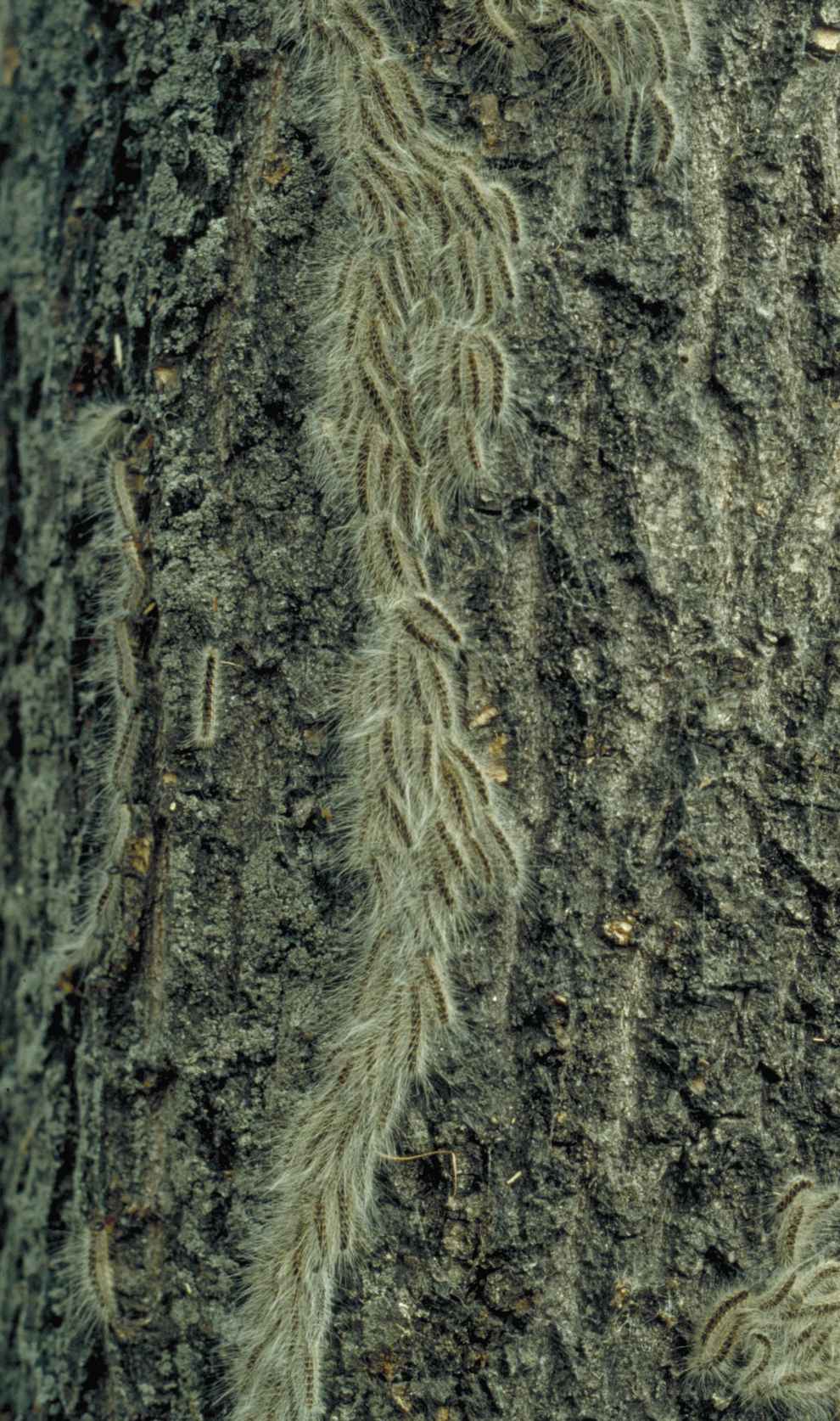
Single- and multi-file processions, clusters and single OPM caterpillars on the trunk of an oak tree. (Picture: Henry Kuppen)
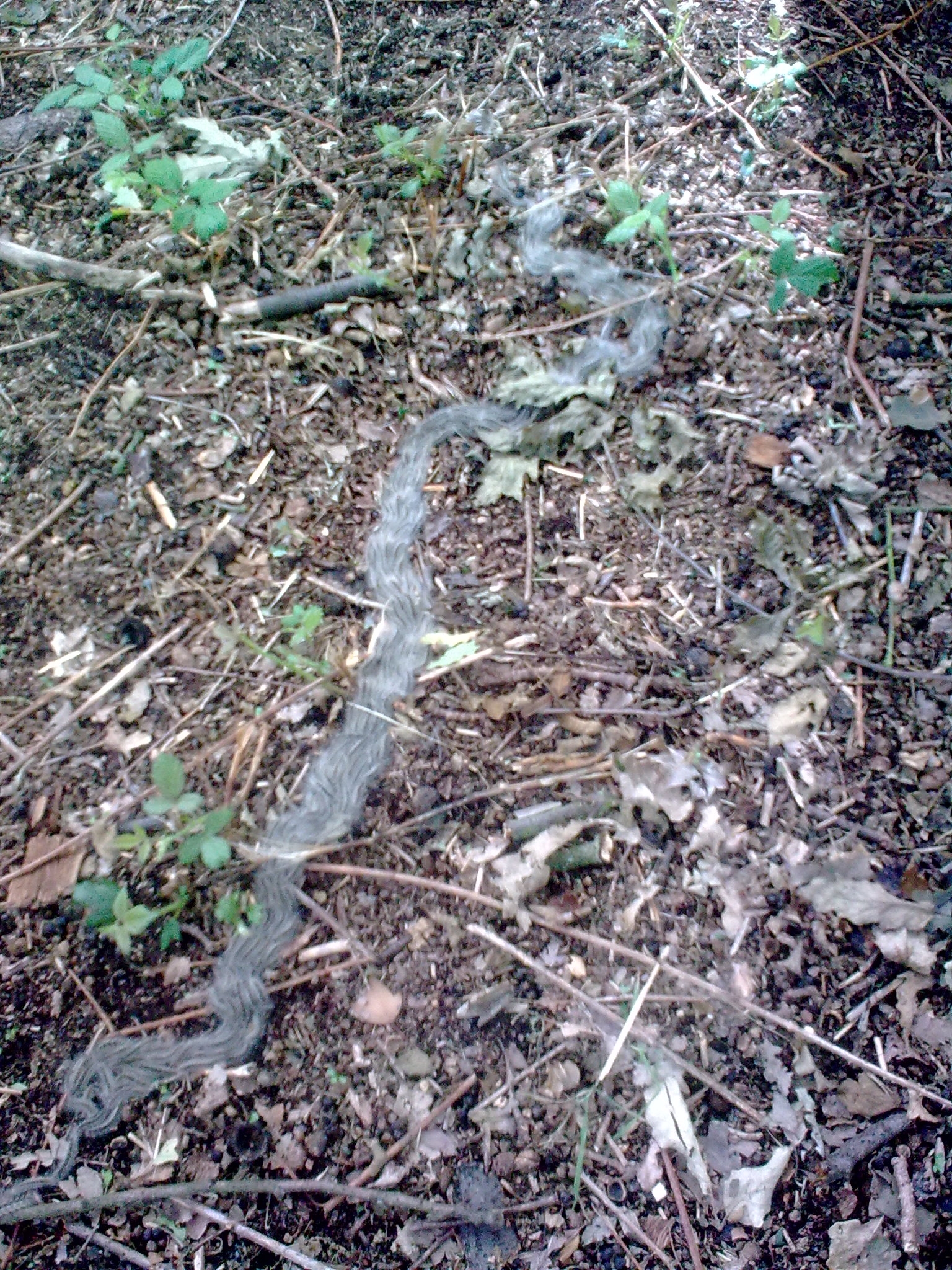
A procession of OPM caterpillars across the ground. Such processions are most likely to be seen close to oak trees. (Picture: Mark Townsend, Gristwood & Thoms)
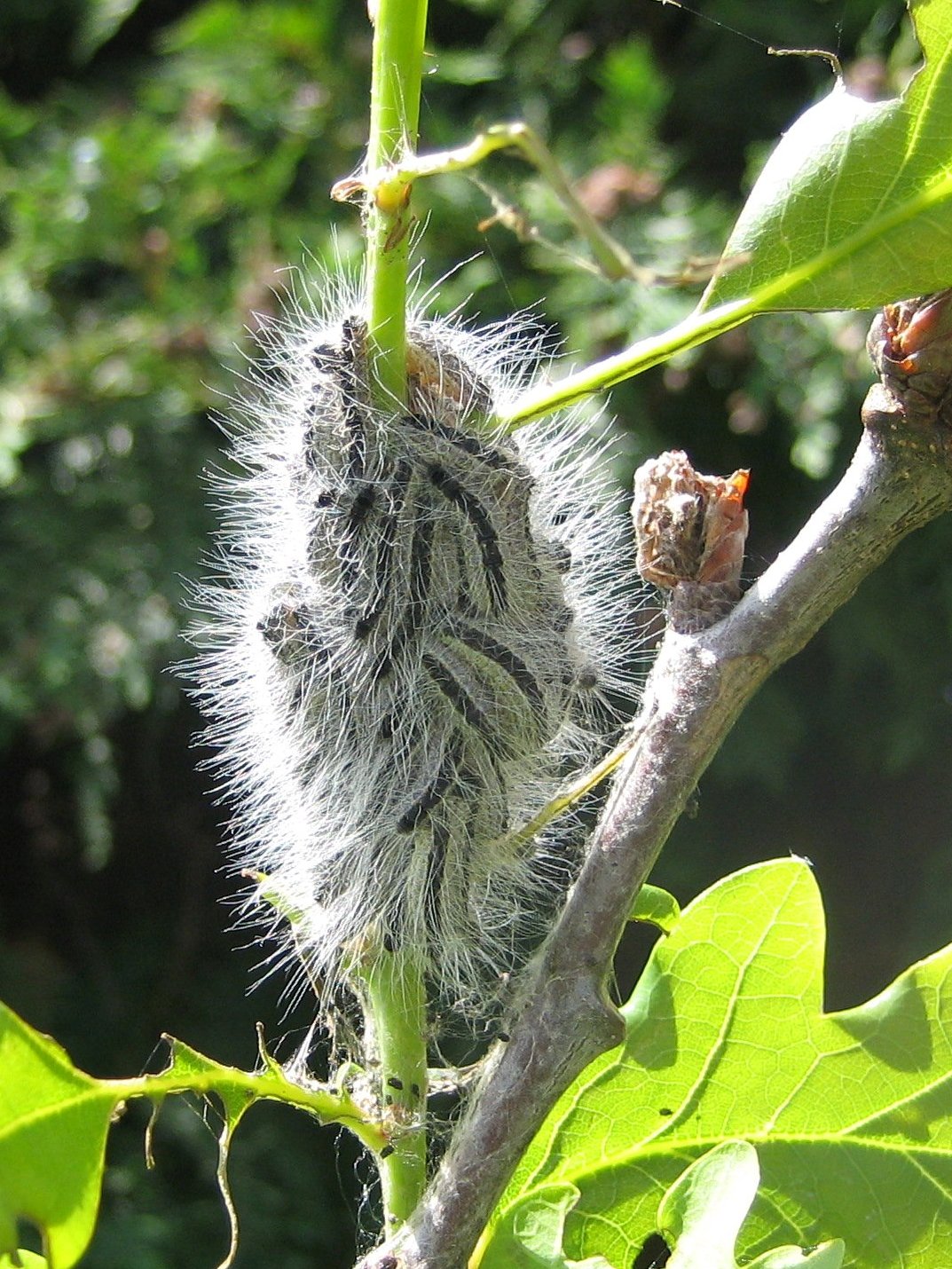
OPM caterpillars in a feeding cluster, showing partially consumed oak leaves.
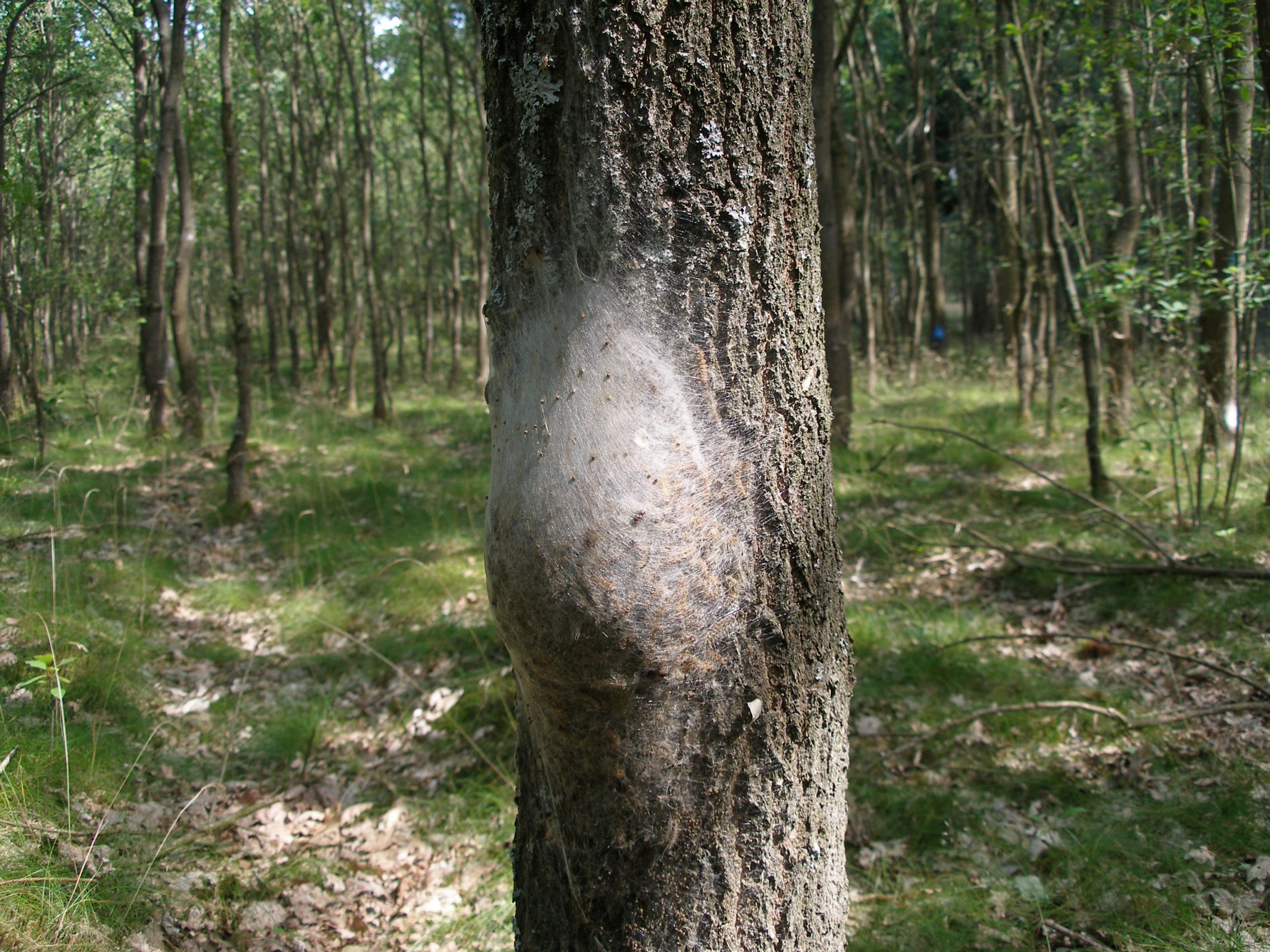
A large OPM nest on the trunk of an oak tree, with caterpillars visible inside. The nest is still white, indicating that is fairly new – see next picture.
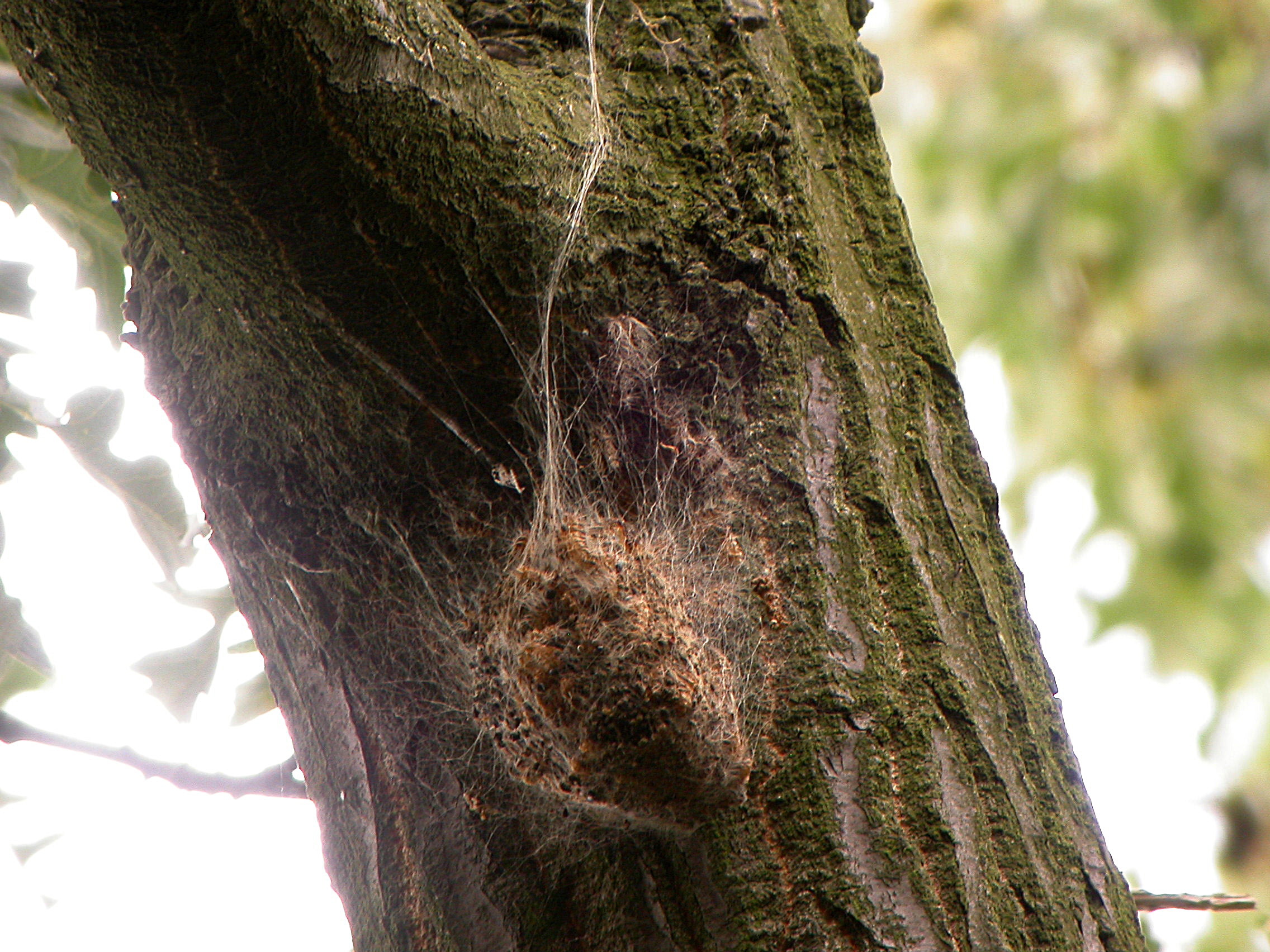
Discoloured OPM nest – they are almost white when new. (Picture: Ralph Parks, Forestry Commission)
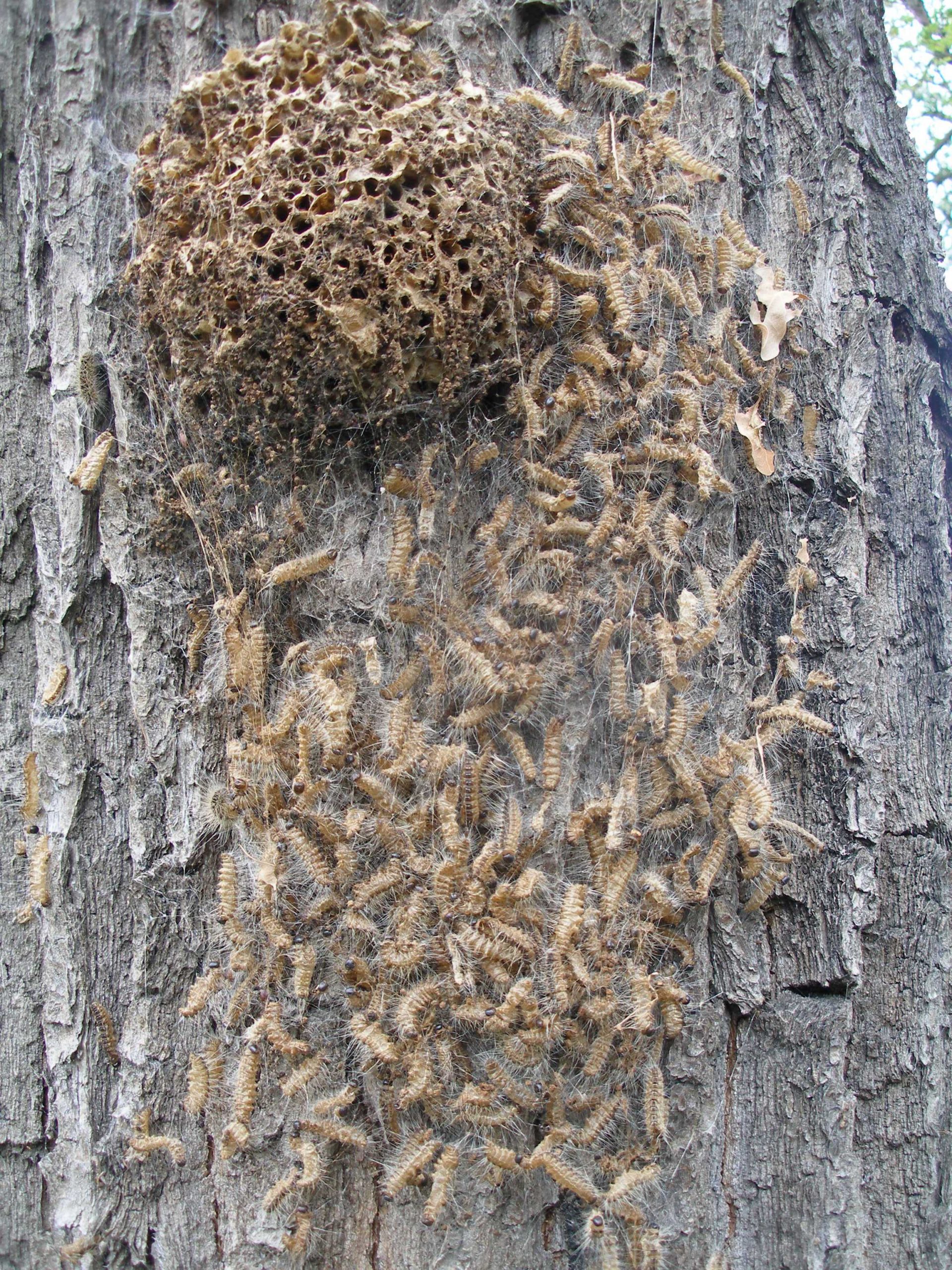
A disintegrating OPM nest on the trunk of an oak tree
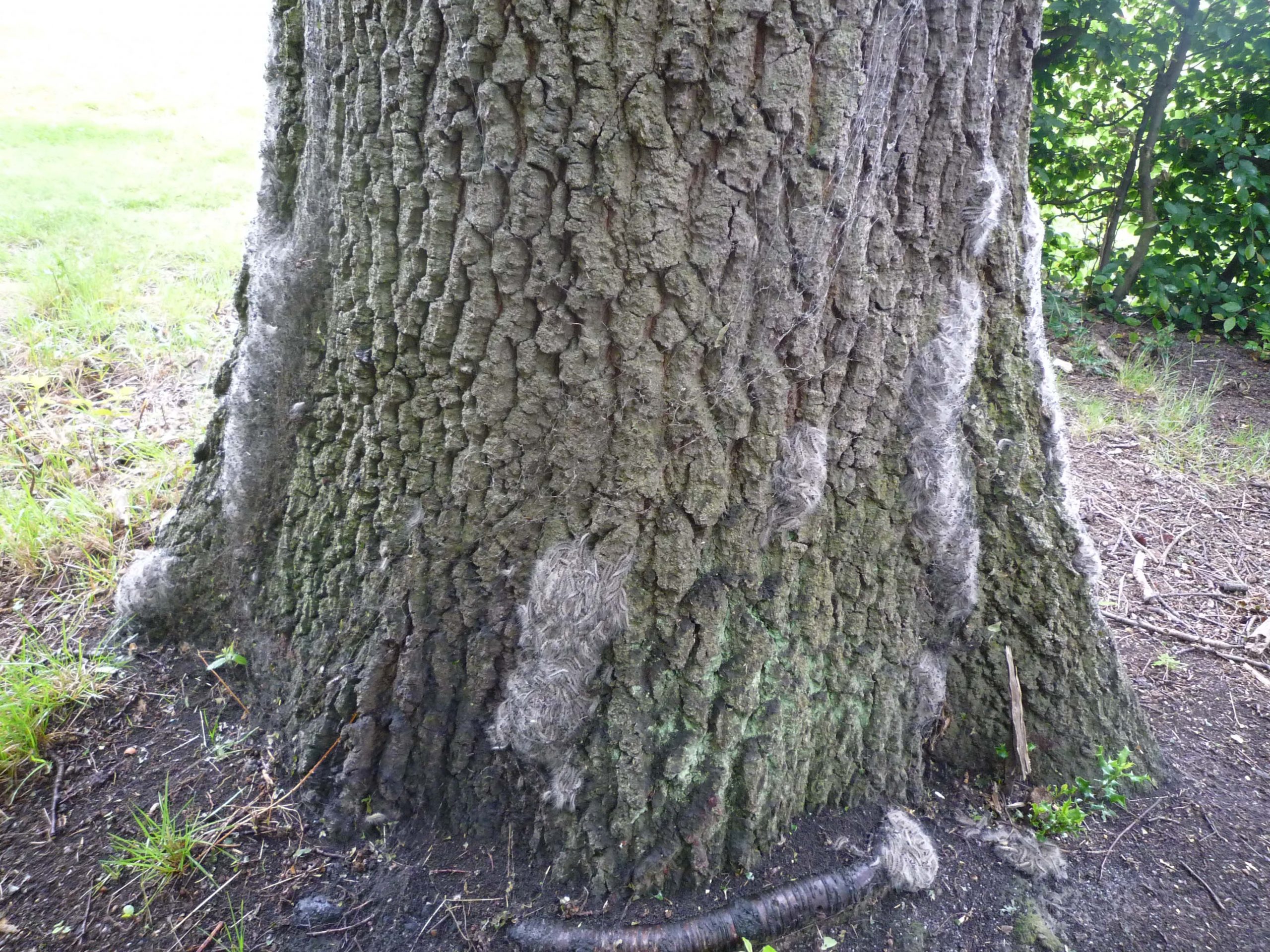
A group of OPM nests around the base of an oak tree. Silken threads extending up the trunk from the nests can be seen on the right.
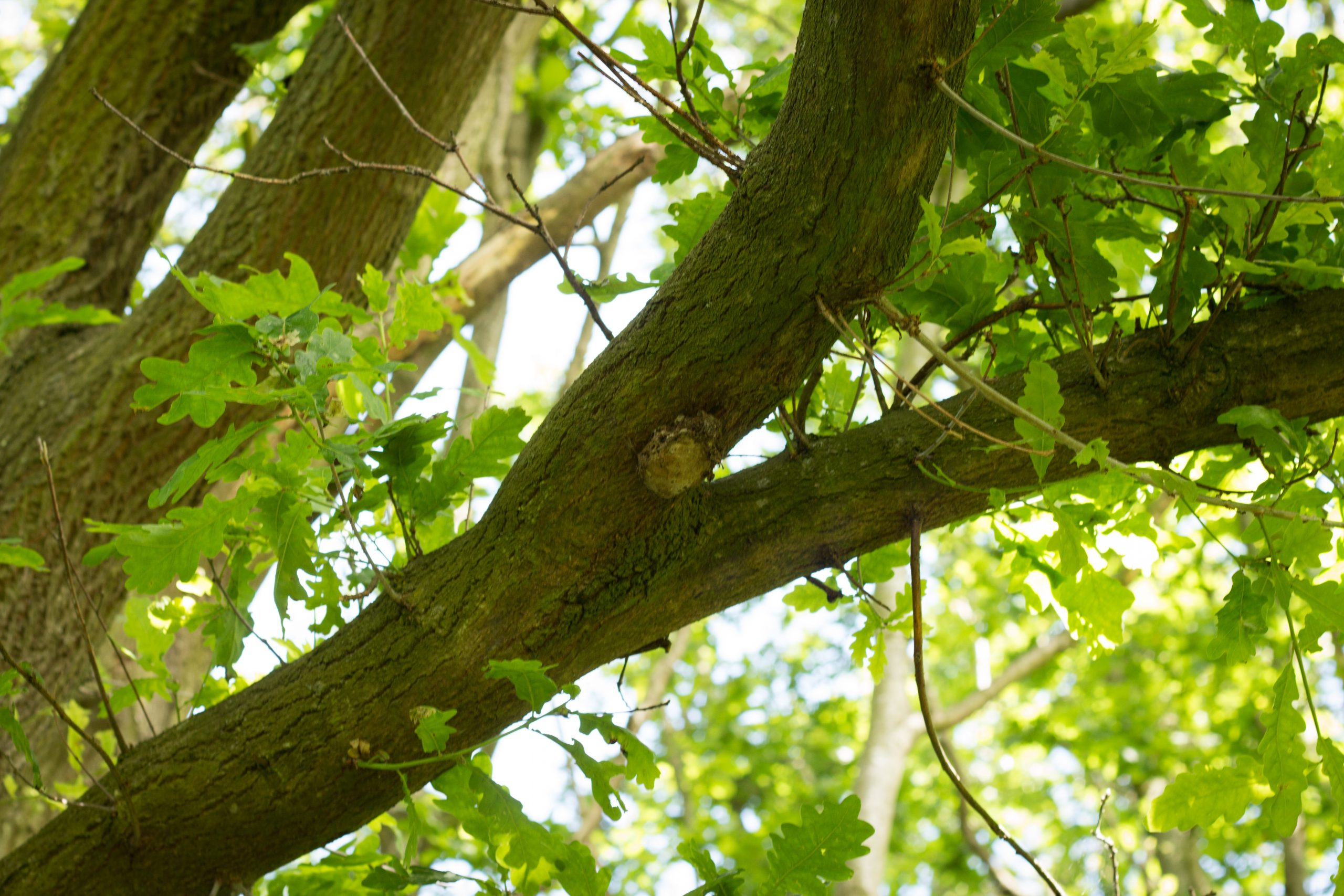
A small OPM nest on the underside of a high branch of an oak tree. Binoculars, and surveying in winter when the trees have no leaves, can help to find such nests.
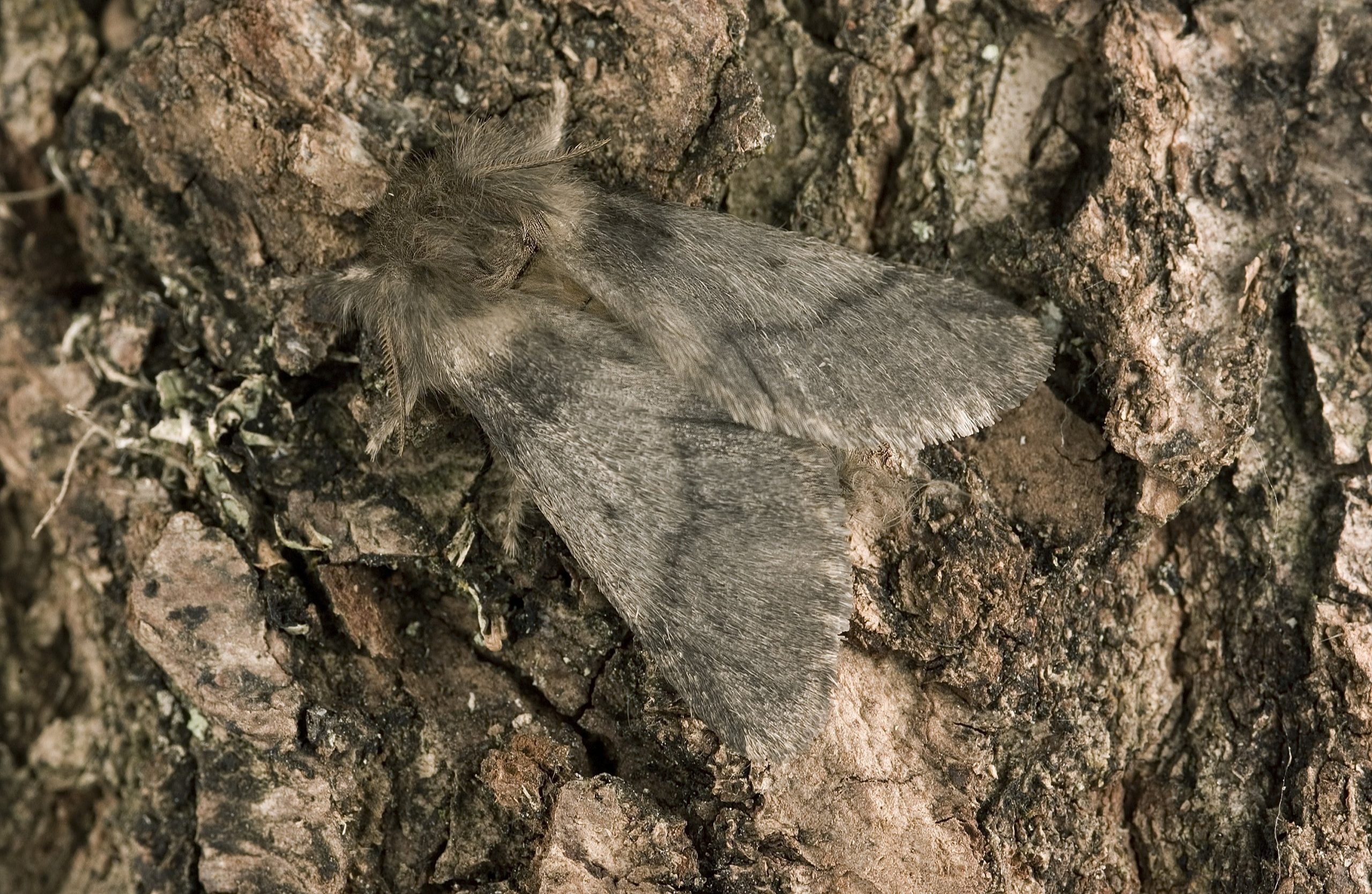
An OPM moth, the adult form of the insect. OPM moths are difficult to distinguish from other species, so we do not ask for reports of them. However, we will take reports of females caught in light traps by moth recorders who know how to accurately identify them.
Unless otherwise stated, pictures were taken by Forest Research and are Crown copyright.